Tire Size 225/65r17 vs 225/60r17
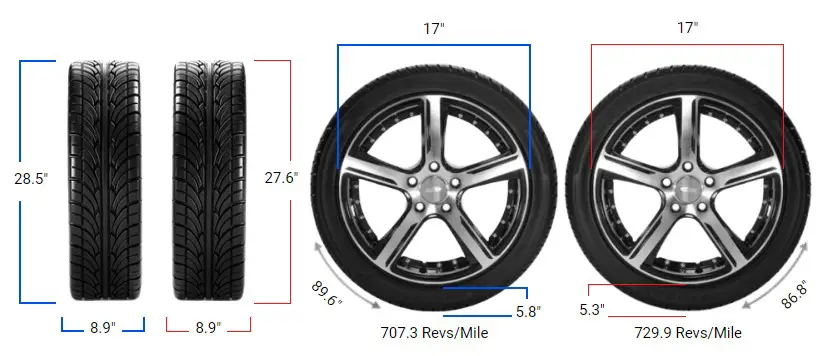
The main difference between 225/65r17 and 225/60r17 tires is the sidewall height. The 225/65r17 tire size is about 0.44 inches taller than the 225/60r17 tire size. This impacts ride comfort, handling, off-road capability, and more.
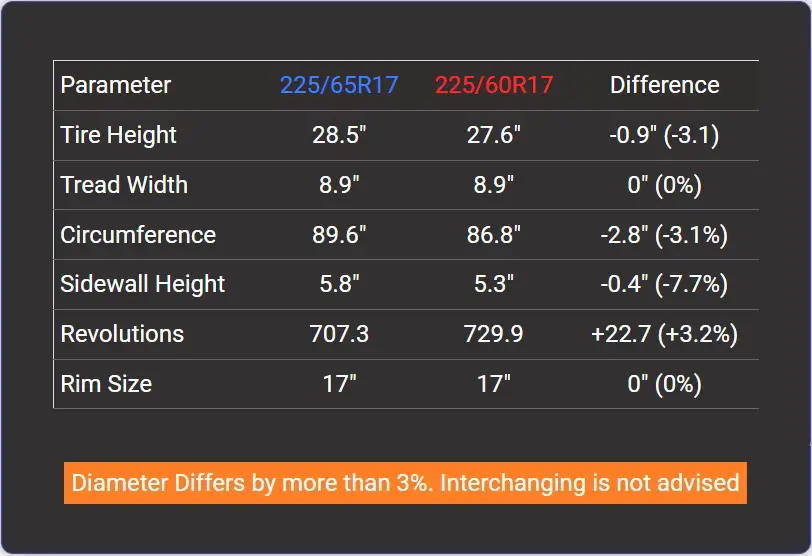
Fitment Guide
When replacing tires, the new size should be within 3% of the overall diameter of the original tires to avoid clearance or speedometer issues.
The 225/60r17 is 3.1% smaller in overall diameter than the 225/65r17, just meeting the 3% recommendation.
Larger tires like the 225/65r17 may require minor suspension modifications for proper fitment and clearance.
Ground Clearance
The extra 0.44 inches (11.25mm) of sidewall height gives the 225/65r17 tires slightly more ground clearance than the 225/60r17 size.
This can help prevent bottoming out over obstacles or rough terrain. However, the lower profile 225/60r17 provides less protection from road hazards.
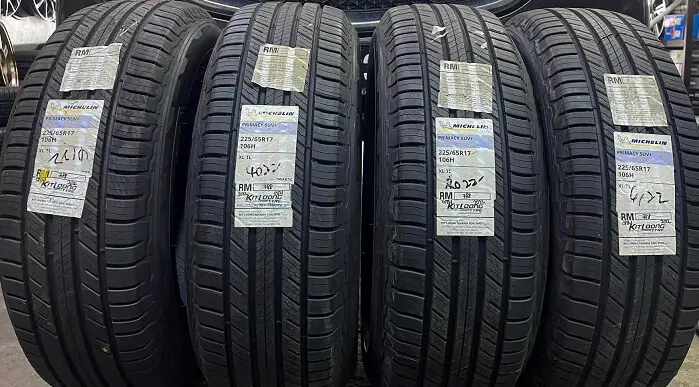
Gas Mileage
With a more minor contact patch and lower rolling resistance, the 225/60r17 tire is marginally more fuel-efficient than the 225/65r17.
This can add up to small but measurable fuel savings, making the 225/60r17 a good choice for commuter vehicles.
Ride Comfort
The flexible sidewalls of the 225/65r17 tire provide a more cushioned ride over uneven pavement and bumps.
However, due to their low profile design, both sizes deliver a comfortable ride quality with responsive handling.
Aesthetics
Subjectively, the slightly lower profile of the 225/60r17 has a sportier, more aggressive look, while the 225/65r17 appears more rugged with its taller sidewall. Wheel well gaps may also be slightly larger with the 225/65r17 tire.
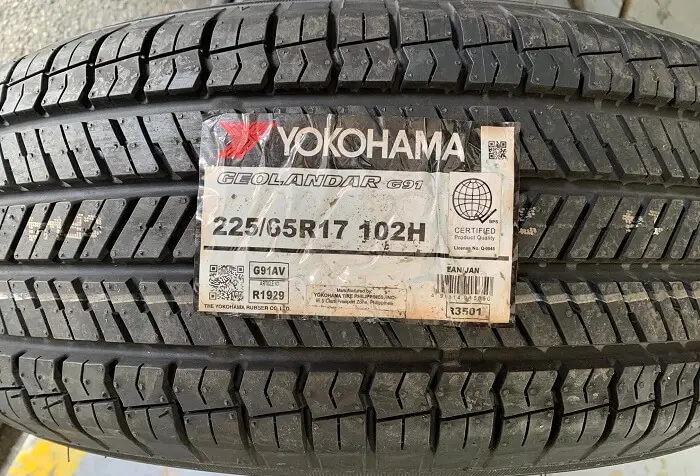
Handling & Stability
The 225/60r17 offers sharper steering response and handling agility due to its shorter, stiffer sidewalls and smaller contact patch.
But both sizes deliver responsive, stable handling for their intended use on sports sedans and coupes.
Noise & Vibration
With its taller sidewall, the 225/65r17 runs quieter and absorbs more road noise and vibrations.
The lower profile 225/60r17 transmits slightly more road feedback into the cabin. However, noise differences are minor between the two.
Durability & Wear
The 225/60r17 may exhibit slightly more even tire wear over time due to its flatter tread profile and stiffer sidewall. Both sizes should deliver strong tread life with proper maintenance and alignment.
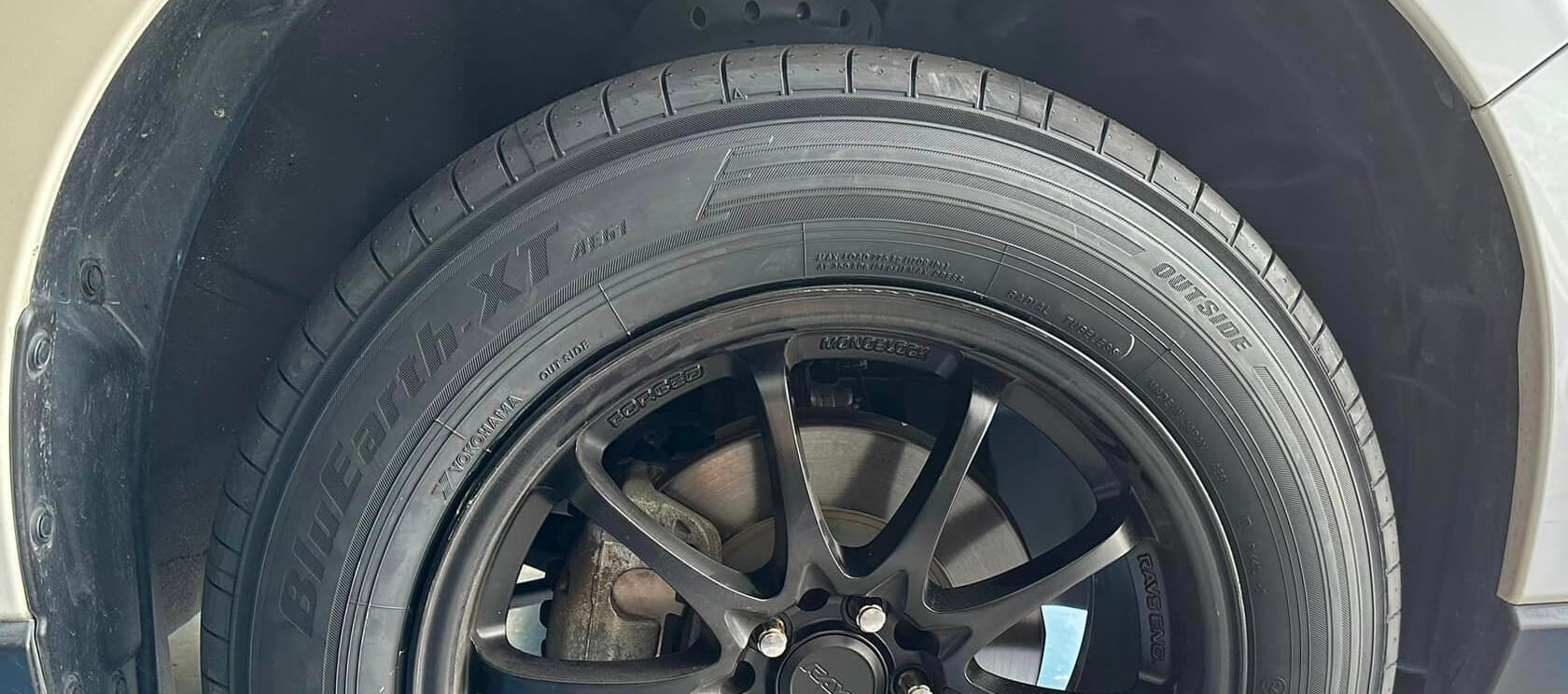
Adverse Conditions
Performance in rain, snow, and light off-road use is comparable between the two sizes. The 225/65r17 has a slight advantage in deep snow due to added sidewall height. Overall traction depends more on the tread pattern than sidewall height.
Speedometer Difference
Due to its smaller diameter, the 225/60r17 causes the speedometer to read 3.2% lower than the actual speed. At an actual speed of 20 mph, the speedometer would read around 20.65 mph with the 225/60r17 tire.
Can I Use 225/60r17 Instead of 225/65r17?
The overall diameter of a 225/65r17 tire is 28.52 inches, while the 225/60r17 tire has an overall diameter of 27.63 inches.
The difference in diameter is about 0.89 inches, equivalent to roughly -3.1%. Although this is marginally beyond the recommended 3% difference, it might be acceptable in some situations.
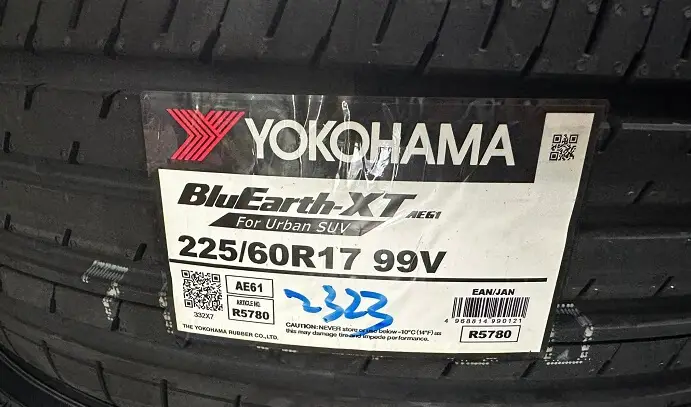
Can I put a 225/65r17 on a 225/60r17?
Both the 225/65r17 and 225/60r17 tires can be fitted on a rim width range of 6.0-8.0 inches.
This means both tire sizes have the same range of suitable rim widths. Thus, a 225/65r17 tire should be able to be installed on a rim that fits a 225/60r17 tire.
Our Observation
Overall, both the 225/65r17 and 225/60r17 deliver strong performance with only minor differences. The 225/60r17 is best suited for vehicles with priorities of responsive handling, fuel economy, and a low-profile look.
Its stiffer sidewalls and smaller diameter provide sharper handling and efficiency. For applications where a smooth ride, durability, and maximum ground clearance are needed, the 225/65r17 is likely the better choice.
Its taller sidewalls cushion the ride while providing extra clearance. While both sizes work well, we’d marginally recommend the more well-rounded 225/65r17 tire for most drivers.

Meet Caitlin McCormack, a Tire Size Expert and Blogger Passionate About Everything Related to Tires. With Years of Experience in the Tire Industry, Caitlin Has Become an Expert in Tire Sizes and Their Impact on Vehicle Performance.

My factory tire size is 225/60/17 mud and snow tire . I have a friend that has winter tires and rims 225/65/17 can I put them on my 2020 Hyundai Tucson with out any issues
The short answer is yes. You can switch to your friend’s 225/65R17 winter tires for the winter season. However, you need to check the rubbing issue, and the reading of the Speedometer will be a little less.
Your article has been very useful. I have a 2022 2.0L Forester that comes standard with 225/60/R17, but due to the bad road conditions and ground clearance needs i will switch to 225/65/R17. From what I,ve read in other blogs, there are no rubbing issues with this new aspect ratio increase in the current Forester generation.